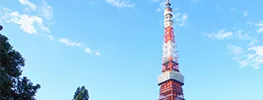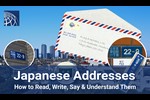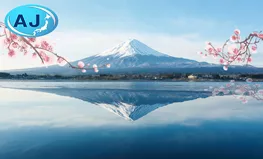Japan and Earthquakes: Why They Happen and How They are Measured
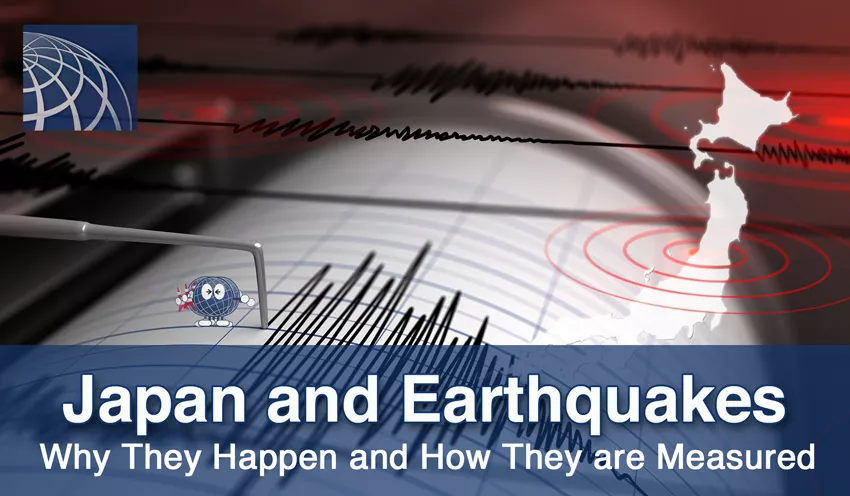
In Japan, you will sometimes hear sudden beeping noise interrupting your TV program and words flashing across the top of the screen - that is a public announcement of the occurrence and magnitude of any earthquake or natural disaster that just occurred in Japan. At the same time, an alarm, warning or evacuation directive will be declared if there is a risk of tsunami. Particularly in order for the earthquake alert to be useful to you, it may be helpful to understand some basic earthquake indicators. However, before getting into terms like "magnitude" and "seismic scale," let's explore the relationship between Japan and earthquakes--so that you can at least understand a bit about what's happening under your feet first.
Japan and Earthquakes: The Pacific Ring of Fire
There are actually well-documented geological reasons why Japan is so earthquake-prone. An earthquake occurs due to the stresses caused by the movements of tectonic plates that comprise the earth. Japan and earthquakes go hand in hand due to the country's position along the "Pacific Ring of Fire," where it lies across three tectonic plates, including the Pacific Plate under the Pacific Ocean and the Philippine Sea Plate.
As earthquakes can also occur within a tectonic plate, thus occurring on land rather than in the sea and radiating outwards, it is it is foreseeable that a major quake may strike directly under Tokyo or another large urban city that is not accustomed to earthquakes or seismically retrofitted. Fortunately, though, many buildings are outfitted to better withstand earthquakes. Some are actually designed with the top part able to move with a given earthquake as it happens, while others are meant to actually absorb it and stay steadfastly grounded. Such innovative technology shows that the relationship between Japan and earthquakes--although certainly frightening at times--has produced some useful technology that can help save lives.
Seismic Activity in Japan
The intensity of an earthquake is measured using the term "magnitude", while the impact of the earthquake that can be felt is measured on the "seismic intensity scale." Japan earthquake information differs from other countries in that there, tremors are typically measured on a 10-step seismic intensity scale of 0 through 7, with lower and upper levels in between. Of course, as you will see below, seismic activity in Japan has been known to go above even the highest level on the scale.
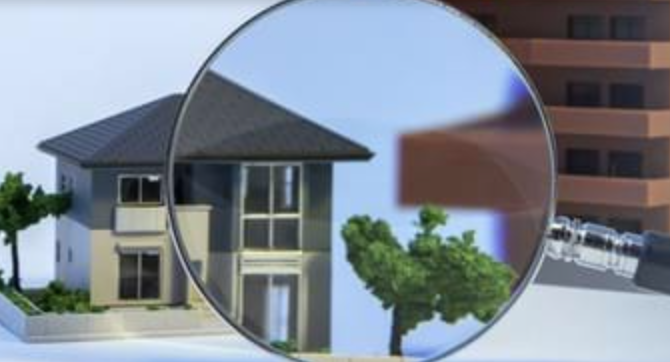
- Earthquake Proof Rental Properties in Tokyo
- Apartments & Houses with higher Tolerance against Earthquakesk in Tokyo
JMA Seismic Intensity Scale
0 |
Nobody feels the tremor. |
|---|---|
1 |
Some people indoors may feel a slight tremor. |
2 |
Many people indoors feel the tremor. Hanging fixtures, such as lights, may shake slightly. |
3 |
Most people indoors feel the tremor. Electrical wires may shake slightly. |
4 |
Most people get a shock from the tremor, and hanging fixtures such as lamps shake considerably; dishes in the cupboard may rattle and objects may topple. |
Lower 5 |
Most people get a shock from the tremor and feel a sense of danger. Dishes in the cupboard and books in the shelves may fall. Items that are not supported well may fall. Unsecured furniture may shift. |
Upper 5 |
It is difficult to walk without holding on to something. Heavy furniture, such as bureaus, may fall over. Brick walls that are not supported well may also topple. |
Lower 6 |
Most people get a shock from the tremor and there is a sense of extreme danger. People cannot maintain a standing position. Furniture that is not secured may move or topple over. Many doors cannot open due to obstruction. Glass windows begin to shatter and collapse. |
Upper 6 |
It becomes impossible to move without crawling. Furniture that is not secured may move or topple over. Most brick walls that are not supported collapse. |
7 |
People are unable to move or act by will. Most furniture are displaced and some unsecured objects such as microwaves, books and kettles may seem to fly in all directions. |
Actual effects vary depending on various factors including distance from the epicenter and the geological condition of the area. With a magnitude of 9, the 2011 Great Tohoku Earthquake that originated off the coast of Japan was the most powerful earthquake ever to have struck the country and the fourth strongest earthquake in the world since record-keeping began in 1900. As Japan earthquake information available through smartphone apps, the internet and other media will tell you, however, many much smaller tremors and quakes occur daily and even hourly without any destructive effects. In fact, constant seismic activity in Japan is simply part of life for many locals and expatriates alike.
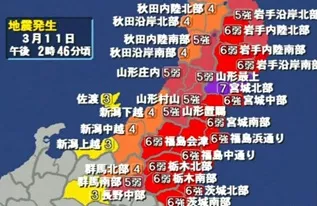
A seismic intensity scale varies depending on the country
Japan |
JMA seismic intensity scale |
|---|---|
USA, Korea |
Mercalli intensity scale |
China |
China seismic intensity scale, CSIS |
EU |
European macroseismic scale, EMS |
How Japanese Society Has Adapted to Earthquakes
The connection between Japan and earthquakes is an old one, no more so to the people who live there. Learning from past disasters, Japan is now one of the most earthquake-ready societies in the world, and training starts from young as school children are regularly put through earthquake drills, where the alarm is sound and the students hide under their desks. In fact, you may have seen a Youtube video where the March 11 Great Tohoku Earthquake occurred during such a school rehearsal.
Children are also made familiar with the sensation of an earthquake so that they will not be too alarmed when a real one strikes. Local fire departments take the children on earthquake expeditions to experience simulations at disaster centers that have machines or facilities where people can experience quakes of various magnitudes and learn about the correct responses to take.
Such preparation continues in the workplace, where regular emergency drills are held; this is especially true in department stores where staff may have to handle crowds of customers during an emergency. Many homes are also disaster-ready, with large furniture and shelves secured in the event of strong quakes.
In Tokyo, Japan and earthquakes are even connected by a special day. November 19th is known as "Disaster Prevention Day" where the public is reminded of disaster prevention steps and to stock up on their stash of disaster prevention goods, from can food to emergency kits. In fact, emergency food has even taken on a gourmet twist in Japan, going beyond the basics to provide food as close to regular life as possible, such as red bean desserts, fluffy canned bread and muffins, tasty cookies, curries and udon noodles, for example.
Japan Earthquake Information is Essential
Earthquakes are an undeniable part of life in Japan, and as such it is never too early to get familiar with how to react when one strikes. To get Japan earthquake information or other disaster announcements even if you are not watching TV or listening to the radio, a convenient option is to download disaster alert applications. Have a basic emergency kit ready at home and be aware of your nearest evacuation zone.
・Earthquake-proof your Home: A Simple Safety Checklist
・Disaster Preparedness: Stockpiling and Emergency Food in Japan
・Useful Free Apps and Websites to Protect You from Natural Disasters in Japan
・Emergency Free Wi-Fi Service 00000JAPAN
・Emergency Evacuation Backpack for Natural Disasters in Japan
・What to do in Case of an Earthquake: Safety and Evacuation

- Rental Apartments & Houses in Tokyo
- Listings of popular and luxurious rental apartments, condominiums, and houses
- designed with expats in mind.

- Apartments & Houses for Sale in Tokyo
- Listings of apartments, condominiums, and houses available for purchase in Tokyo.






